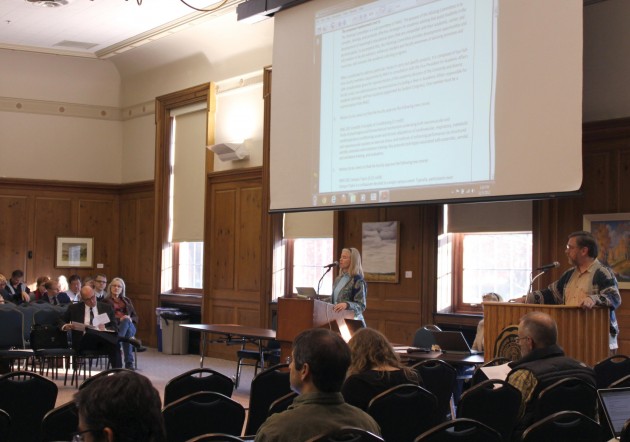
The November faculty meeting was called to order by the sound of a horn yesterday afternoon at 4 p.m. in the Union Building Ballroom.
Notable topics in the meeting included an amendment to the graduation distribution requirements, an update on the search for a new vice president of Academic Affairs and promising announcements by President Casey regarding next year's prospective student application numbers and efforts to increase student scholarships.
"Admission season is very much underway," President Casey said as he took to the podium.
Each year Nov. 1 marks the first day that the admissions office looks at the number of completed applications received from prospective students for the coming year. And so far, the number of applications is up.
"The institution has never received as many completed applications as it has at this point," Casey said.
Another big agenda item on President Casey's to-do list has been gathering support for student scholarships. Casey stressed the money needed to help students.
"I'm talking nine figures, hundreds of millions of dollars," he said. "We simply must endow student education."
Additionally, the ongoing search for the vice president for Academic Affairs continues to be on the forefront of the president's mind. Professor Wayne Glausser, who is heading the search committee for the new vice president, also presented on the topic as the pool of candidates continues to grow and be assessed. The administration hopes to have someone appointed to the position before the end of March.
Going into effect as soon as possible will be an amendment to the distribution requirements that was presented by geosciences professor Fred Soster, head of the Committee on Academic Policy and Planning (CAPP), and then subsequently voted on by the faculty.
Before the vote was taken, concerns about the watering down of the distribution requirements surfaced. Nevertheless, when put up to the faculty vote the amendment passed. This amendment will allow students to take two courses from the same department to fulfill their group requirements. The result will be "more flexibility for students to meet the distribution requirements in the first two years," Soster said.
The decision will particularly effect dual subject areas such as art and art history, and sociology and anthropology because students may now take both of their social sciences courses in these areas without having to reach across so many disciplines, which sometimes proves to be difficult to account for during the registration process.

